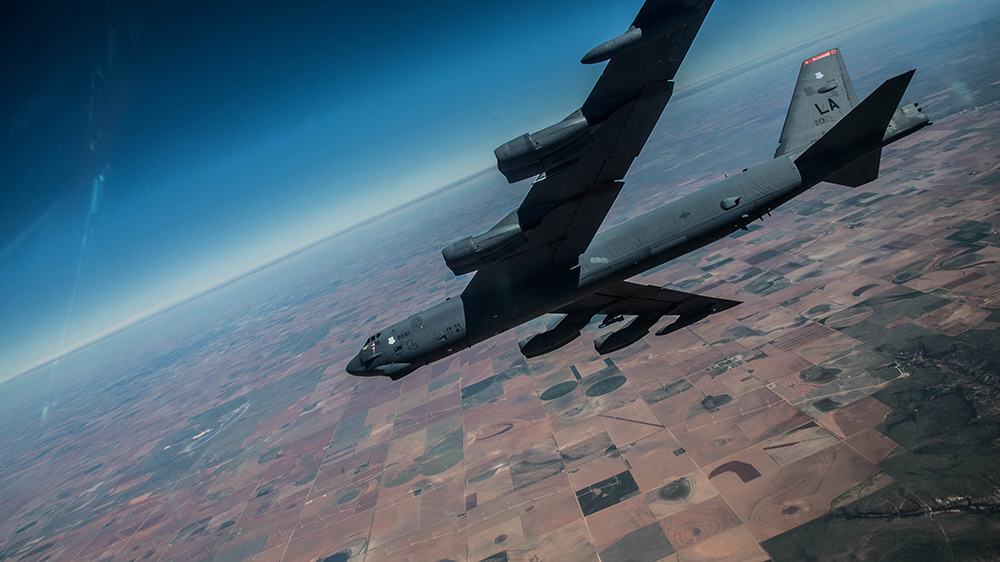The Nuclear Posture Review, or NPR, will come on the coattails of the NDS and will be fully nested within it, said Colin H. Kahl, the undersecretary of defense for policy, Wednesday during a virtual discussion at the 2021 Carnegie International Nuclear Policy Conference.
“We want to make sure that the nuclear posture review does not stand on its own in its own silo, no pun intended, but is rather integrated into the analysis of the NDS.”
The NPR will spell out, among other things, priorities for modernizing the U.S. nuclear triad and ensure that the United States has the right capabilities matched with the national nuclear strategy. The review will also examine how the United States can take steps to reduce the role of nuclear weapons in its national security strategy while ensuring the strategic deterrent remains safe, secure and effective and that the extended deterrence commitments to its allies remain strong and credible.
It will be informed by the current and projected global security environment; threats posed by potential adversaries, and the capabilities of the United States and its allies and partners to address those threats; and the impacts of policy, posture and capabilities on strategic stability and the risks of miscalculation. Both documents will figure into the fiscal year 2023 budget deliberations, Kahl said. Especially important to the FY 2023 budget will be decisions the department makes about modernizing and replacing the aging systems of the nuclear triad, which includes ground-launched, submarine-launched and air-launched nuclear weapons. Modernization also involves new submarines, such as the Columbia-class ballistic missile submarines; new intercontinental ballistic missiles as part of the Ground-Based Strategic Deterrent program; and new bomber aircraft, such as the B-21 Raider.

A B-52H Stratofortress, a nuclear-capable bomber, flies through the air. © Air Force Senior Airman Luke Hill
“I do think we need to have a modernized triad as a hedge against an uncertain technological future, but one where we expect our adversaries to be quite competitive and building up their own capabilities,” Kahl said, adding that, in addition to triad modernization, related nuclear command and control systems must also be upgraded.
While Kahl said he can’t predict exactly how the NPR will look when it’s complete, he did say the U.S. remains committed to its nuclear deterrent and its extended deterrence commitments.
“I don’t know exactly where we’re going to land on numbers on all of this, but what I can guarantee you is that we are committed to having a safe, secure and reliable deterrent, and one that is credible — not just to our adversaries, but to our allies, over which we have extended our deterrence commitments,” he said.
The U.S. nuclear deterrent is expected to protect the U.S. and its allies in a rapidly-changing nuclear environment, Kahl said.
“As we look at the strategic environment … I think we see a couple of things,” Kahl said. “First, obviously, I think it’s widely recognized that we’re in a period of accelerating great power competition. But it’s more than that. We’re also increasingly in a multipolar nuclear world.”
Russia, he said, continues to develop new kinds of nuclear weapons and also continues to expand its arsenal of non-strategic nuclear weapons — typically smaller, lower-yield “tactical”-style nuclear weapons designed to attack troops or facilities, rather than entire nations.
“We also see that … the role that nuclear weapons play in Russia’s doctrine is quite elevated in the sense that, I think, Russia sees much higher utility for nuclear weapons than any other state,” he said.
Nearby, China wants to grow its own nuclear arsenal both in numbers and technological capacity, he said.
“I think within the next decade we might see the number of nuclear weapons in China double,” he said. “But they’re also developing new kinds of nuclear weapons … I think that what that suggests is that they may be moving beyond, kind of, their traditional view of a kind of minimal deterrent towards seeing nuclear weapons as something that they might require in a regional conflict.”
The U.S. has long-standing security commitments around the world to a number of treaty allies. Those allies know the U.S. nuclear deterrence capability underwrites the U.S. security commitment to them. What comes out in the NPR will be just one of the signs that the U.S. continues to be committed to ensuring its extended nuclear deterrence commitments remain strong and credible.
Kahl said anxiety among America’s traditional allies has been high. But recent efforts by the president, the secretary of defense and the State Department have gone far to reassure those allies of America’s continued commitment to partnership and mutual security.
“You saw a lot of great statements coming out of the G7 and NATO and U.S.-E.U. meetings this past week to include issues like China, where the countries have not always been closely aligned,” Kahl said. “But I think … we all have to admit there’s real anxiety among our allies. So, I think whatever we do on the nuclear piece has to take into consideration this … emerging multipolar nuclear world where, really for the first time, we’re going to face two peer competitors in the nuclear space, plus … the North Koreas and Irans of the world.”





